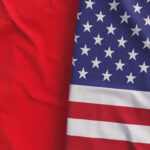Two macro tailwinds that could propel the China internet sector even further
China internet firms are poised to gain from the onshore bull market’s wealth effect and inclusion into broad MSCI indices.

May 26, 2015 – China’s internet and ecommerce sector has picked up momentum in recent weeks. The uptick in performance by China internet companies began on March 13th and has continued through today, adding 34.42%1 over this time period. We believe the recent strong performance in China’s internet sector is supported by the wealth effect from favorable returns in the onshore bull market. We believe this strong performance may be indicative of a prolonged trend that could continue to gain momentum as U.S-listed Chinese companies are included into MSCI’s definition of China within its broad-based global indices.
The onshore bull market’s wealth effect.
China’s government no longer wants the country to rely on manufacturing cheap exports to drive its growth. The government is instead focused on increasing domestic consumption and becoming more self-reliant. China has advanced this goal by supporting the onshore stock markets. The onshore markets added 128% since they began to rally in the second quarter of 20142. This return created approximately $3 trillion in new wealth for Chinese investors3.
The onshore bull market’s wealth effect may be starting to manifest itself outside of China’s capital markets. According to a report recently issued by China’s National Bureau of Statistics4, From January to April of this year, the total retail sales of consumer goods reached $1.5 trillion dollars, up 10.4% year-over-year. We believe Chinese consumers may be beginning to spend more confidently as a result of gains they have experienced from the capital markets. As Chinese consumers spend more money, they are increasingly doing so online. Over the same time period, the national online retail sales of goods and services reached $168 billion dollars, an increase of 40.9% year-over-year. Online retail sales now comprise 11% of total retail sales.
We believe the growth in retail sales in China is correlated with the rally in the onshore equity market. China internet and ecommerce companies are becoming the primary beneficiaries of this increase in sales. The onshore bull market’s wealth effect is trickling down to the balance sheets of China’s internet and e-commerce companies. We see this as a long-term phenomenon that coincides with the opening up of China’s economy and capital markets.
Including U.S-listed Chinese companies within MSCI’s definition of China.
While the onshore bull market’s wealth effect helped nudge China’s internet and ecommerce sector upward, MSCI’s inclusion of U.S-listed Chinese companies within its definition of China may potentially give the sector an additional push. Many of the biggest tech companies in China choose to list in the United States to gain a greater international investor base. By listing outside of Hong Kong, these companies have been excluded from MSCI’s definition of China.
MSCI is a leading provider of index solutions globally, with over $9 trillion in assets benchmarked to their indices as of 3/31/20155. It is extremely rare for MSCI to make drastic changes to any of its index definitions. When the change is implemented it has potential to cause a tectonic shift in the markets. The inclusion is set to take place in two phases, with phase one beginning in November 2015 followed by phase two in February 2016.
By including U.S-listed Chinese companies within their definition of China, MSCI will trigger a massive reshuffling of assets by fund managers that track their indices. This inclusion will extend beyond just the MSCI China index and roll up into broader indices like the MSCI Emerging Markets Index and MSCI All Country World Index. In order to comply with MSCI’s new definition of China, fund managers will have to diminish their current Hong Kong listed holdings to raise funds to purchase the U.S-listed names.
We looked at the current asset levels of all the index funds and ETFs that benchmark to the MSCI indices that will be affected by the definition change as of 4/30/2015. We calculated that once U.S-listed Chinese companies are included into these funds there could be an inflow of $10 billion into the fifteen largest U.S-listed Chinese stocks.6
Based on our calculations, there could be an additional $66 billion of inflow6 into these stocks if MSCI benchmarked active managers and institutional investors follow MSCI’s new definition of China. While these managers will not be required to buy the U.S-listed companies, not doing so would create undesirable tracking error versus their benchmark.
In our opinion, the trickle down effect from gains in China’s onshore capital markets has yet to fully manifest itself. We believe investors still have a window of opportunity to potentially benefit from this trend. Additionally, MSCI’s inclusion of U.S-listed Chinese companies into their definition of China could drive massive inflows into these names. Phase one of the inclusion is scheduled to take place in November 2015, leaving some runway for investors to gain exposure to U.S-listed Chinese companies ahead of the changes.
Investors looking to gain exposure to these two trends may want to consider taking a position in the KraneShares CSI China Internet ETF (Ticker : KWEB) today.
- Return based off the CSI Overseas China Internet Index. Since the beginning of the uptick in performance (3/13/2015 – 5/26/2015)
- Based off the The MSCI China A International Investable Market Index (IMI) which captures large, mid and small-cap representation and includes the China A-share constituents of the MSCI China All Shares IMI Index. It is based on the concept of the integrated MSCI China equity universe with China A-shares included. From the start of the A-share market rally on 5/16/2014 through 4/30/2015.
- $3 trillion in new wealth is based off the total market cap growth in dollar terms from May 16, 2014 through 4/30/2015.
- “Total Retail Sales of Consumer Goods in April 2015”, National Bureau of Statistics of China, 5/13/2015
- MSCI benchmarked assets from MSCI as of 3/31/2015
- Potential inclusion data calculated based off amount of assets benchmarked to affected indices by China weighting as of 3/31/2015
















